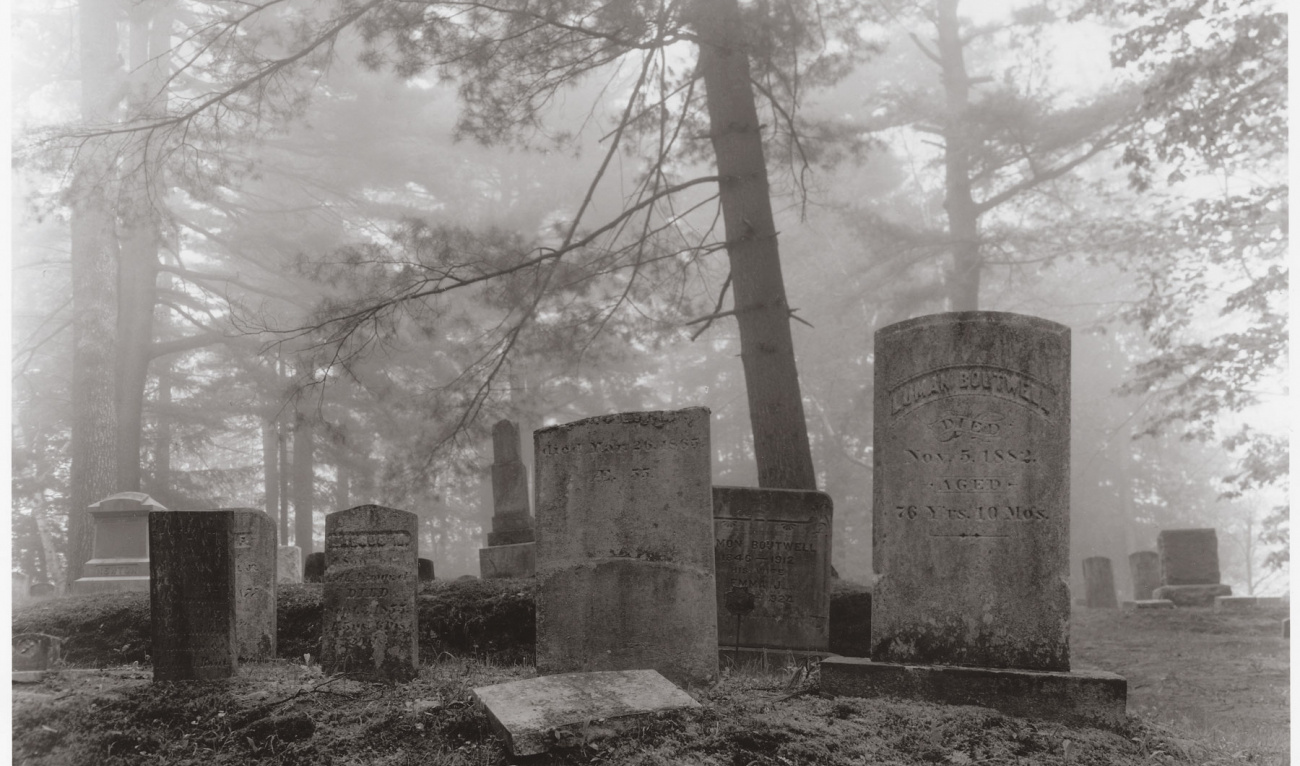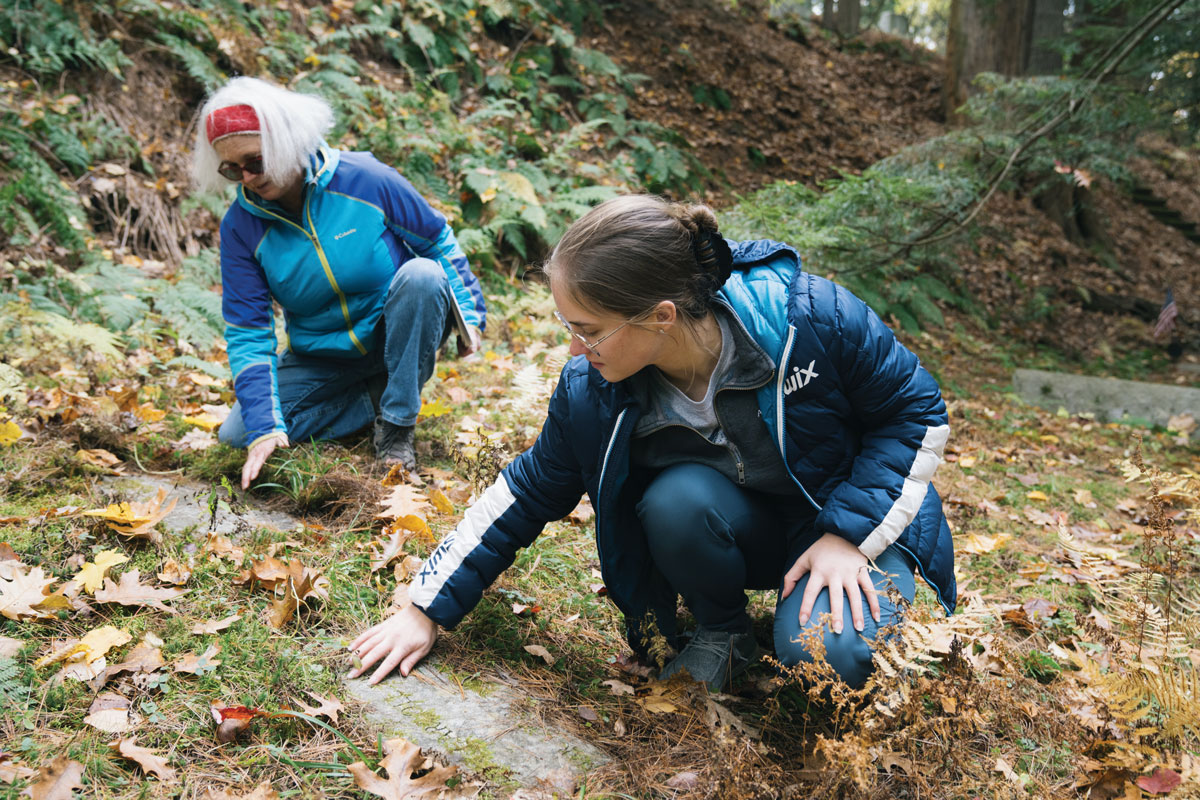Graveyard Shift
Students, faculty, staff, and local residents have joined forces to restore and conserve the 12-acre, 250-year-old cemetery on campus. With outreach that includes preservation workshops and tours, the Dartmouth Cemetery Conservation Group is writing a new chapter in the history of the site. Here’s more about the group’s origins and plans.
No Stone Left Behind
Every summer since the 1990s, Dartmouth has brought in two specialists who spend several days mending gravestone cracks, repairing broken stones, and cleaning dirty grave markers. But with 1,778 stones and markers spread across 375 plots, tending to each one has been impossible. The new conservation team aims to change that. “We want to expand the effort so that we can do preservation year-round,” says Diane Travis, an administrative coordinator from the provost’s office. With more trained volunteers, each stone can get the care it deserves.
Who’s Who?
The conservation group—led by Travis, Rauner Library archivist Ilana Grallert, Cady Rancourt ’24, Hanover parks director John Sherman, and Heather Drinan, the College’s director of government relations—has a simple goal: repair, educate, and ensure that the cemetery and the history of those buried there do not fade with time (and wind and rain). “I look at the cemetery as stories,” says Grallert. “Everybody has a story that is interesting to somebody. That’s why I do this.”
True Tales of Grave Robbing
Grallert leads walking tours of the grounds during which she describes historical figures, expert archivists, burial procedures, and sensational murders. She also reveals the stealthy practices of 19th-century grave robbers—people hired by medical schools to collect cadavers. It is probably no coincidence that a law prohibiting grave robbing went into effect in 1796—the year Dartmouth Medical School was founded.
Extracurricular Activity
“I got into all of this completely by accident,” says Rancourt, an earth sciences major who went on one of Grallert’s cemetery tours during her freshman fall. “It was just so cool.” After the tour, Grallert brought Rancourt on as student representative for the conservation effort. Rancourt performs gravestone surveys and created a guide to teach fellow undergrads how to survey stones. She also led a first-year trip to the cemetery. “From then on,” she says, “I would get people coming up to me and saying, ‘Oh, you’re the girl from the cemetery, right?’ ”
Tombstone Triage
Surveys set the foundation for restoration plans in the spring. Each survey documents the material and status of a particular gravestone. Is the rock crumbling? What is the name on the stone? What is the style of the headstone? Is it made of granite, marble, or slate? Are there cracks or chips? Some stones are past saving. One of Rancourt’s favorites has a tree root growing over it, and only a corner of the small headstone marking the grave of a young child peeks out. “It’s a testament to the power of the land through time,” she says.
Never-Ending Effort
The group will host a workshop May 13 with experts on hand to teach conservation methods. Those who attend are expected to pass along what they learn to future volunteer caretakers at the cemetery, which is owned by the town of Hanover and maintained by the College.
Labor of Love
Anyone who visited the Dartmouth Cemetery in the 1950s might have noticed a man wandering among the graves, notebook in hand, pencil poised. That was botany professor Arthur H. Chivers, class of 1902, who recorded 376 pages of gravestone inscriptions and locations—an archival contribution considered vital to today’s restoration work. Without Chivers’ records, many faded gravestone inscriptions would be forgotten.
Grim Reaper
Long before Chivers began his archival project, local farmer William Worthington Dewey started a list of deaths that occurred near and around the College, including facts and observations about the deceased. His records from 1797 to 1859 provide some gory details, such as the case of Frederick Weizer, who was “one day dining very heartily [when] he swallowed a very large piece of meat which caught in his throat and caused almost instant death,” or John Russell, who Dewey reports was “gorged [sic] to death by an enraged bullock with which he was contending.”












